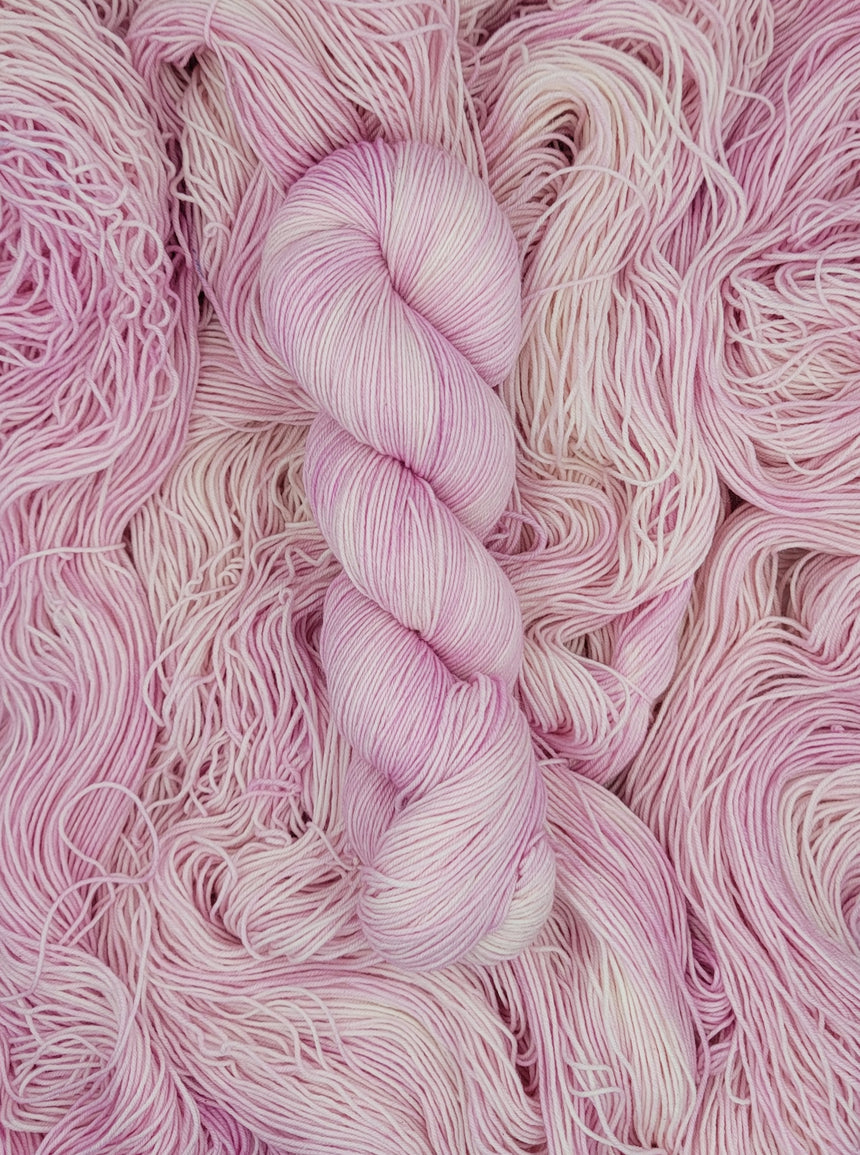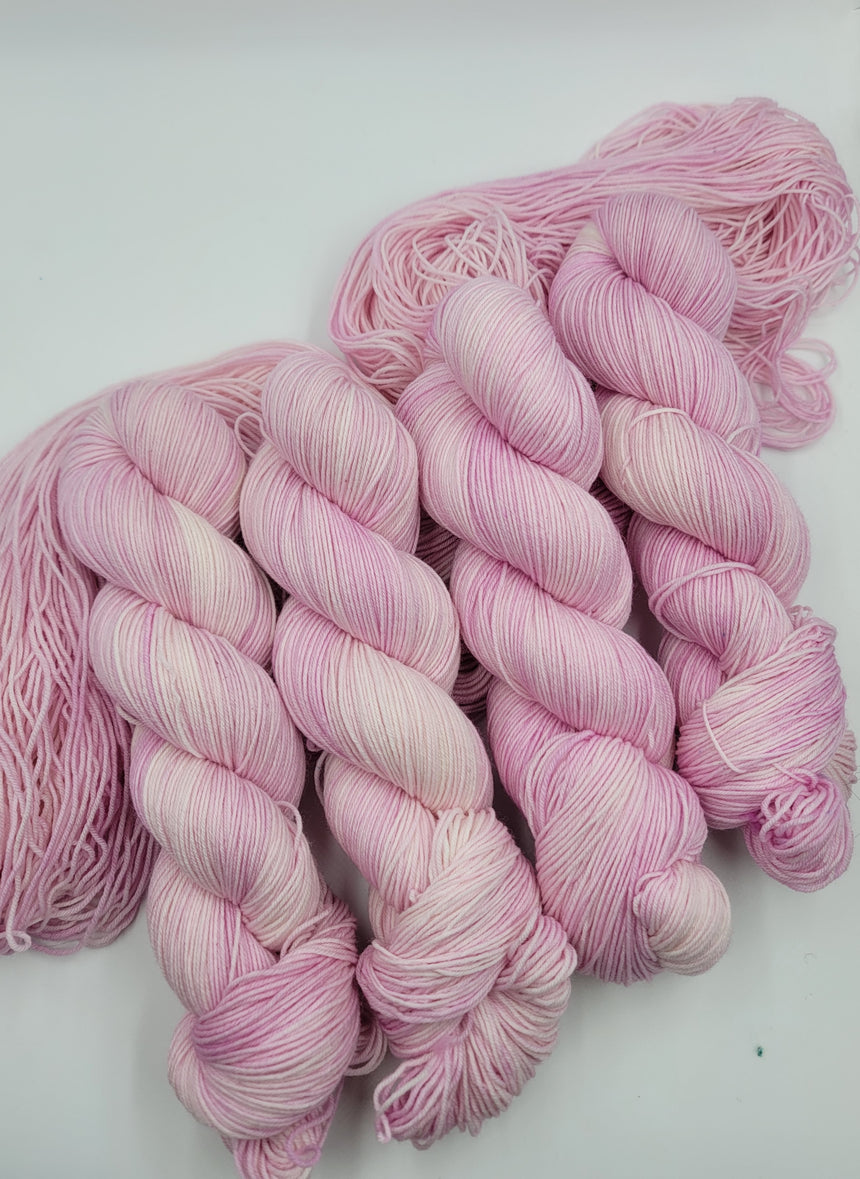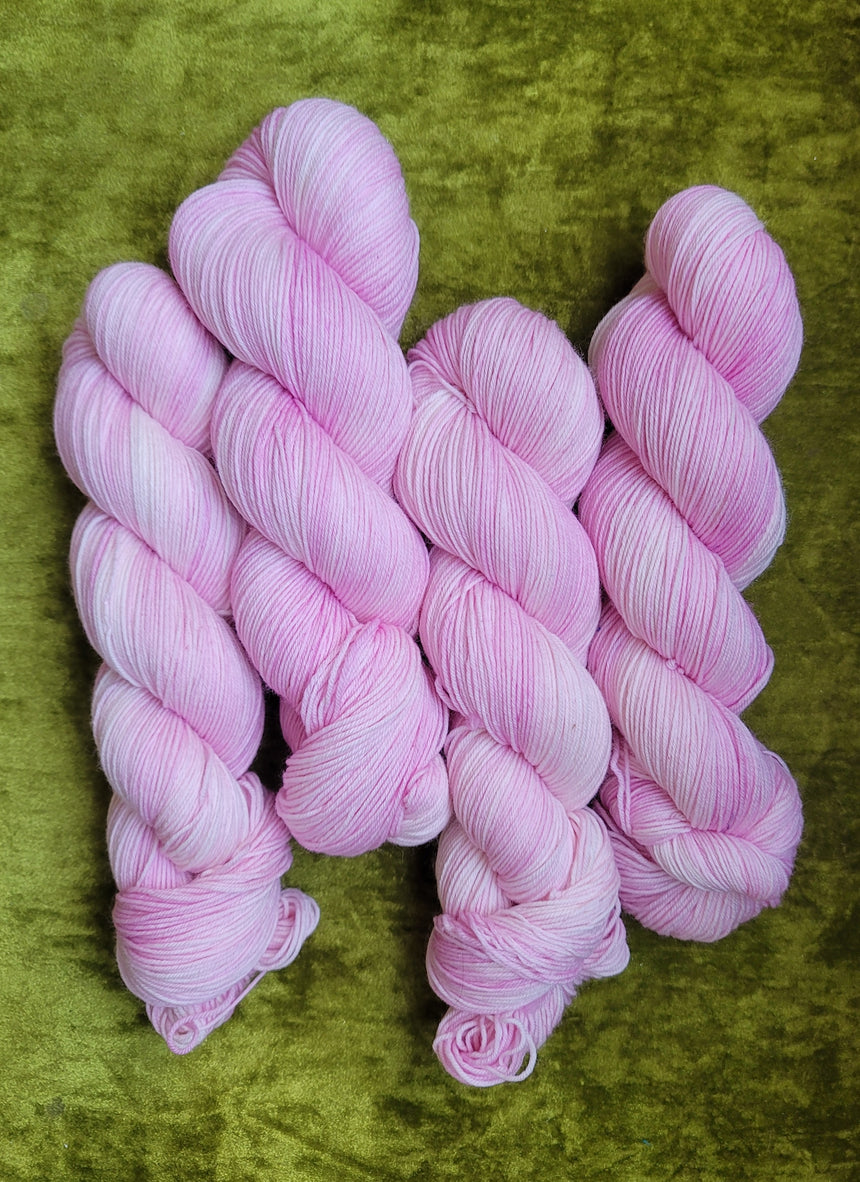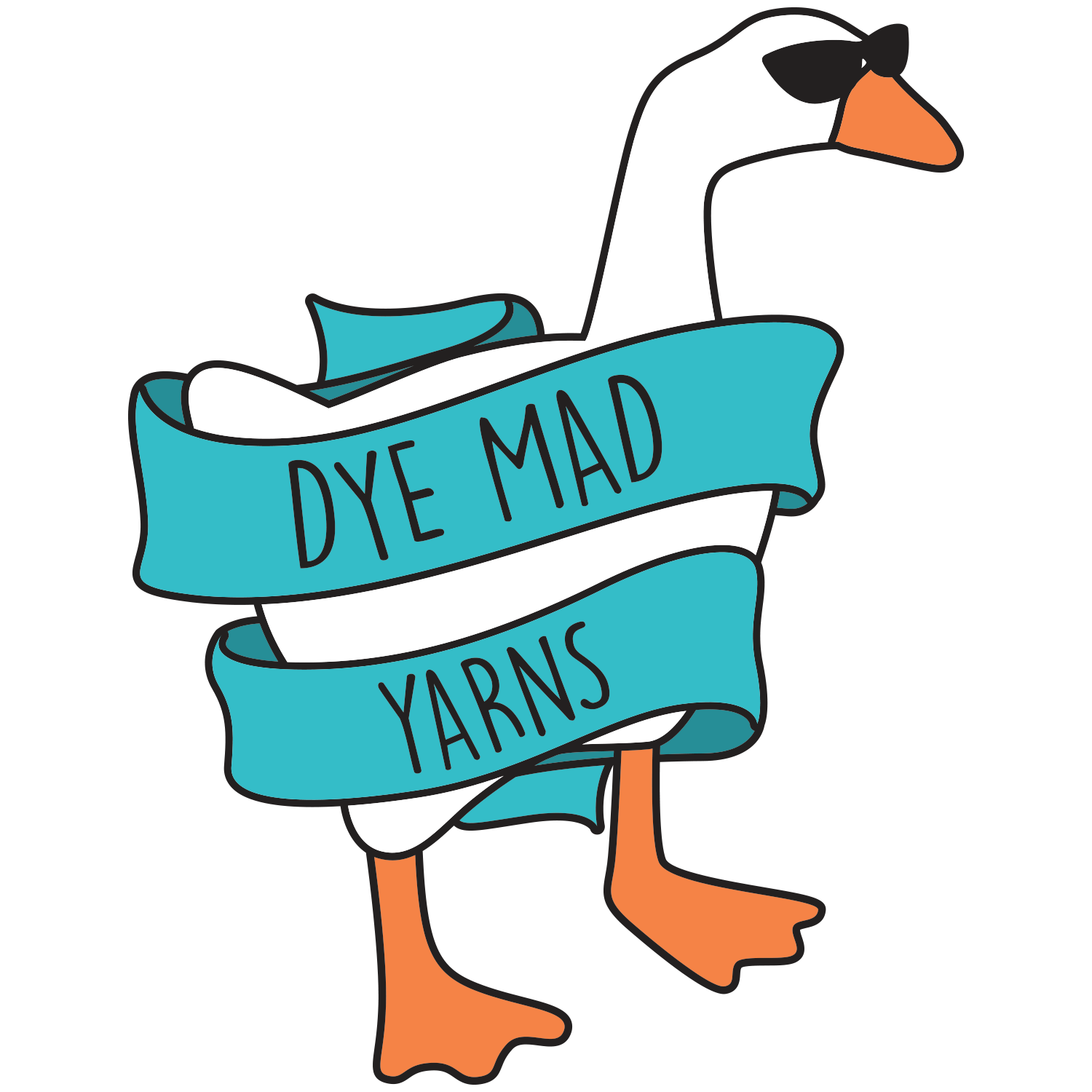Pink Diamond
$6.00Fourth in our Gemstone series is Pink Diamond - Diamond is the gemstone for April, but it seemed mean to give y'all an undyed yarn.
Depending on the hue and intensity of a diamond's coloration, a diamond's color can either detract from or enhance its value. Most white diamonds are discounted in price when more yellow hue is detectable, while intense pink diamonds or blue diamonds can be dramatically more valuable. Red diamonds are the rarest. The world's most expensive diamond ever sold at auction, however, was the Pink Star Diamond, which sold for $71.2 million in 2017. The largest diamond ever auctioned, "The Spirit of the Rose" was also a pink diamond (most pink diamonds are under 10 carat, this one was 14.8). In July 2022, a mine in Angola yielded a pink diamond that is believed to be the largest discovered, at a whopping 170 carat.
Pink diamonds have been found in all of the major diamond-producing nations, notably Australia, Brazil, Russia, South Africa and Tanzania. They were first discovered in India.
Historically, it has been claimed that diamonds possess several supernatural powers:
- A diamond gives victory to he or she who carries it bound on his left arm, no matter the number of enemies.
- Panics, pestilences, enchantments, all fly before it; hence, it is good for sleepwalkers and the insane.
- It deprives lodestone and magnets of their virtue (i.e., ability to attract iron).
- Arabic diamonds are said to attract iron greater than a magnet.
- A diamond's hardiness can only be broken by smearing it with fresh goat's blood.
- In traditional Hinduism one should avoid contact with a diamond whose surface area is damaged by a crack, a crowfoot, a round, dull, speckled area, or which is black-blue, flat, or is cut other than the (ideal) hexagonal shape.
Diamonds are a solid form of the element carbon with its atoms arranged in a crystal. They have the highest hardness and thermal conductivity of any natural material, so diamonds are used in major industrial applications such as cutting and polishing tools.
Diamonds are an allotrope of carbon - the other most common allotrope of pure carbon is graphite. I don't have anything to add to that, other than I just think it's interesting. Wild how the structure of the atoms of an element can change the outcome so much!
Diamonds are some of the most-used and sought after gemstones. They have been used as decorative items since ancient times. They are the birthstone for April, as well as to celebrate the 60th wedding anniversary. Diamonds are used most in engagement rings today. This specifically has been a practice amongst European aristocracy since the 15th century, though sapphire and ruby were more desirable. The modern popularity of diamonds was largely manufactured by De Beers Consolidated Mines. Through an advertising campaign beginning in the 1930s and continuing into the mid-20th century, De Beers made diamonds into a key part of the betrothal process and a coveted status symbol. The diamond's high value has been the driving force behind dictators and revolutionary entities, especially in Africa, using slave and child labor to mind blood diamonds to fund conflicts. Though popularly believed to derive its value from its rarity, gem-quality diamonds are quite common compared to rare gemstones such as alexandrite.
Really, the modern history of diamonds is another chapter in the violence of colonialism and monopolies. There's a lot of history and information about the diamond industry, especially as it relates to the 4Cs - carat, clarity, color, and cut - but that's on y'all to research if you're interested.
There is TOO MUCH history of diamonds!! Anyway, we recommend pairing our Pink Diamond with Aries and Taurus (obviously), History of Contraception, Lavender Festival, Aquamarine, What Do You Mean Salad (and really any of our tonals).
BASES:
Hattie Floof: 50g, 437 yards, 70% Superkid mohair/30% silk (lace weight)
Chester Sock: 100g, 437 yards, blend of 75% superwash merino/25% nylon
Sabrina Sock: 100g, 432 yards, blend of 80% US sourced non-super wash merino/20% silk
Tortie Sport: 100g, 287 yards, 80% alpaca/20% silk
Minnie DK: 100g, 246 yards, 100% superwash merino wool
Genny Worsted: 100g, 191 yards, 80% superwash merino/20% alpaca
Chubby Trevor: 115g, 136 yards, 100% superwash merino
Chunky Trevor: 150g, 82 yards, 100% superwash merino, single ply
Summer Fingering: 65% silk/35% linen, 115g skein, approximately 438 yards
Summer DK: 65% silk/35% linen, 115g skein, approximately 246 yards
Summer Worsted: 65% silk/35% linen, 115g skein, approximately 181 yards
Gladys Fiber: 80% Shaniko Wool/20% Tussah Silk, approximately 4oz braid of fiber for spinning, felting, etc






